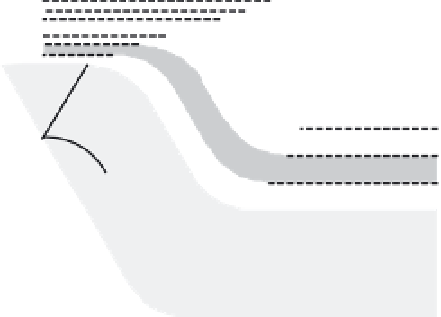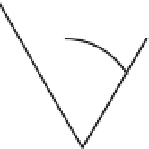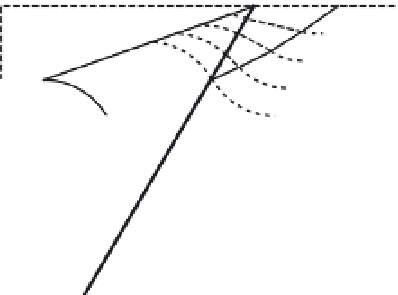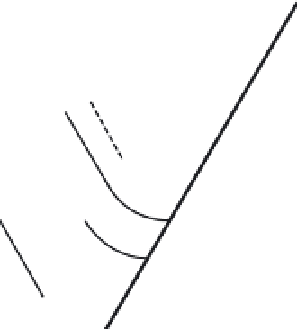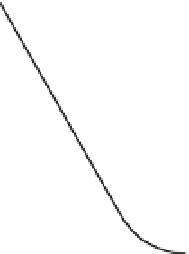Geology Reference
In-Depth Information
Growth Strata Above A Rounded Hinge
initial position
of active hi
n
ge
A
9
8
7
6
5
4
3
2
1
pregrowth strata
incipient thrust flat
exit growth
axial surface
entry growth
axial surface
active hin
g
e
B
growth strata
9
8
7
6
5
1
pregrowth strata
Fig. 4.35
Geometry of growth
strata.
Model of accumulation and
progressive folding of growth strata
above a flat-ramp transition with a
rounded hinge zone. Growth strata
accumulate at a constant rate with
initially horizontal top surfaces.
Beds are deformed as they are
carried through the hinge zone.
A. Geometry as incipient fault with
a rounded hinge forms. Numbers
denote positions at the base of
the growth strata for tracking
deformation. Axial surfaces define
the hinge zone through which
folding occurs. B. First growth
strata are deposited. Note that the
bed thins over the uplifted
backlimb of the fold. C. Sufficient
shortening has occurred to
completely rotate growth strata
through the hinge zone. D. Older
growth strata widen above the
backlimb whereas younger growth
strata are deformed through the
hinge zone. Modified from
Hubert-Ferrari
et al.
(2007) and
Suppe
et al.
(1997).
exit growth
axial surface
entry growth
axial surface
slip
active hin
g
e
growth strata
hinge
formation
9
8
7
C
6
5
4
1
pregrowth strata
slip
active hin
g
e
hinge
formation
9
8
growth
strata
7
6
limb
widening
5
D
4
3
2
1
pregrowth strata
slip
hanging wall of a thrust fault are carried up and
across a buried flat-ramp-flat transition, they
are forced to deform into a
fault-bend fold
(Suppe, 1983) due to the nonplanar shape of the
thrust surface. Both in front of and behind the
ramp, apparently unfolded strata may be pre-
sent in the hanging wall. But over the ramp
itself, a fold will grow. For a given length and
angle of footwall ramp and for a thickness of
the hanging wall, the geometry of folding can
be predicted, if it is assumed that bed length
and thickness do not change during folding





